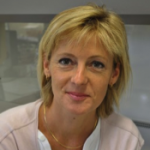Link to Pubmed [PMID] – 7806577
J. Cell Biol. 1994 Dec;127(6 Pt 2):1995-2008
Fimbrins/plastins are a family of highly conserved actin-bundling proteins. They are present in all eukaryotic cells including yeast, but each isoform displays a remarkable tissue specificity. T-plastin is normally found in epithelial and mesenchymal cells while L-plastin is present in hematopoietic cells. However, L-plastin has been also found in tumor cells of non-hematopoietic origin (Lin, C.-S., R. H. Aebersold, S. B. Kent, M. Varma, and J. Leavitt. 1988. Mol. Cell. Biol. 8:4659-4668; Lin, C.-S., R. H. Aebersold, and J. Leavitt. 1990. Mol. Cell. Biol. 10: 1818-1821). To learn more about the biological significance of their tissue specificity, we have overproduced the T- and L-plastin isoforms in a fibroblast-like cell line, CV-1, and in a polarized epithelial cell line, LLC-PK1. In CV-1 cells, overproduction of T- and L-plastins induces cell rounding and a concomitant reorganization of actin stress fibers into geodesic structures. L-plastin remains associated with microfilaments while T-plastin is almost completely extracted after treatment of the cells with non-ionic detergent. In LLC-PK1 cells, T-plastin induces shape changes in microvilli and remains associated with microvillar actin filaments after detergent extraction while L-plastin has no effect on these structures and is completely extracted. The effect of T-plastin on the organization of microvilli differs from that of villin, another actin-bundling protein. Our experiments indicate that these two isoforms play differing roles in actin filament organization, and do so in a cell type-specific fashion. Thus it is likely that these plastin isoforms play fundamentally different roles in cell function.
